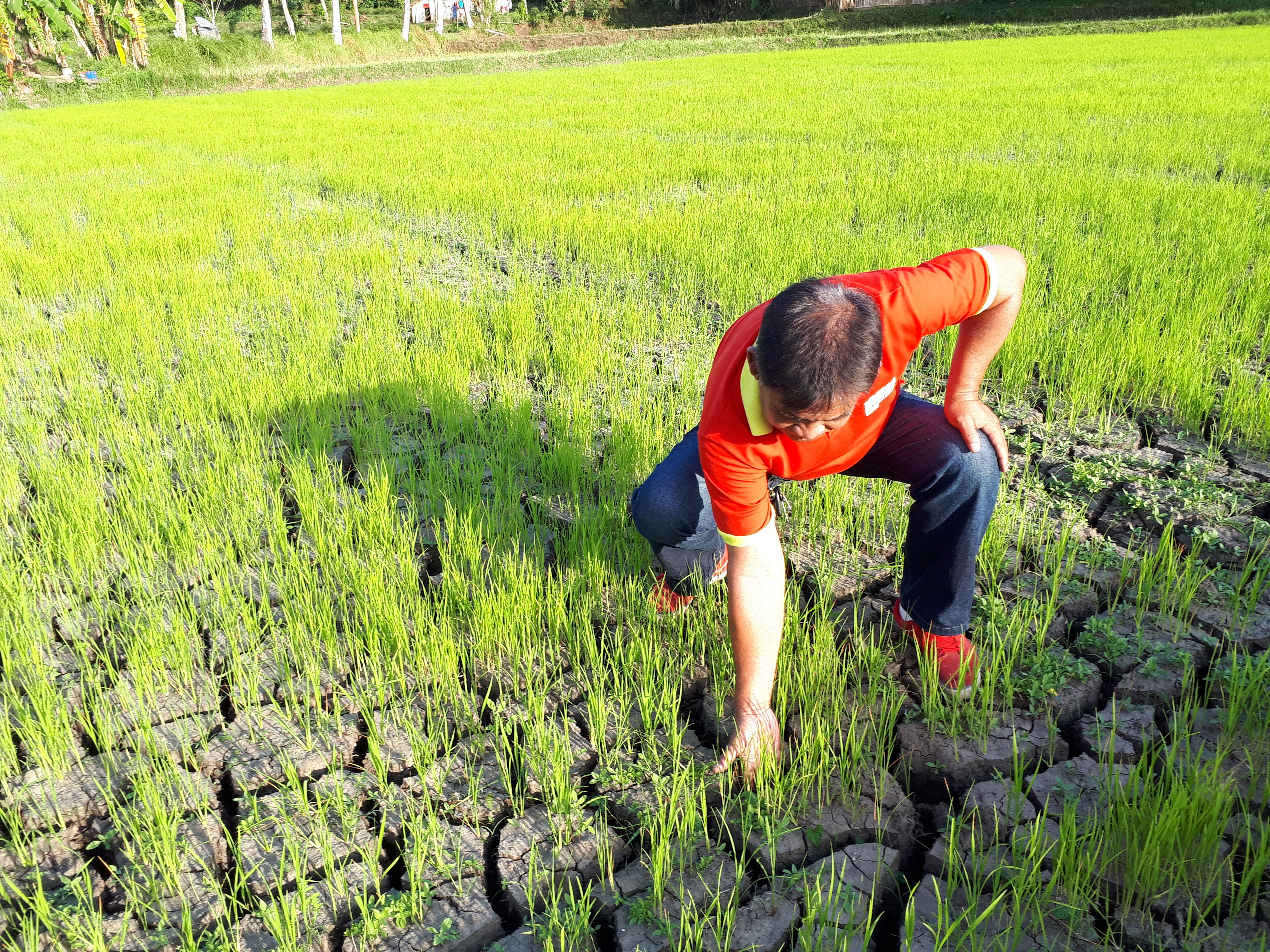Government steps up water saving projects as drought widens

THIRSTY LAND The weather bureau says up to 33 provinces are likely to bear the brunt of the El Niño phenomenon, whose effects are already evident in this parched rice field in Libon, Albay. —Michael Jaucian
BAGUIO CITY — The country will soon embark on a massive water conservation and watershed protection program, not just because of the drought but to build up its irrigation supply so “we can feed every Filipino” at all times, Agriculture Secretary Emmanuel Piñol said here on Friday.
“Our No. 1 mistake in this country is taking for granted the blessings that God has given us,” by failing to conserve rainwater and river water, he said.
“We have enough water during the rainy season. Some of us drown in floods and yet during the small period when we have no rain, we already cry for water. Why? Because we have not managed our water resources,” Piñol said.
Malacañang has proposed to address that by requiring communities to build water impounding facilities and rainwater catchment basins to prevent runoff water from flowing out to sea, he said.
These efforts would help government in building “sustainable agriculture,” in preparation for the time when “our land and water resources will not be able to feed the population,” Piñol said.
Article continues after this advertisementThe weather bureau Pagasa is forecasting a longer, drier and warmer El Niño by May, with up to 33 provinces likely to experience drought.
Article continues after this advertisementReduced rainfall by May
El Niño is a weather pattern associated with reduced rainfall.
Pagasa Climate Monitoring and Prediction Section chief Analiza Solis said in an interview on Friday that the country has been affected by El Niño since mid-February.
She said highly reduced rainfall was to be expected by May in Pangasinan, Bataan, Pampanga, Tarlac, Zambales, Metro Manila, Batangas, Cavite, Laguna, Quezon, Marinduque, Occidental Mindoro, Oriental Mindoro, Romblon, Palawan, Albay, Camarines Norte, Camarines Sur, Catanduanes, Masbate and Sorsogon in Luzon, Aklan, Antique, Capiz, Iloilo, Negros Occidental, Biliran, Eastern Samar, Leyte, Northern Samar and Samar (Western Samar) in the Visayas and Misamis Occidental and Dinagat Islands in Mindanao.
Drought has already affected Ilocos Norte, Ilocos Sur, La Union, Occidental Mindoro, Oriental Mindoro and Palawan in Luzon, and Zamboanga del Sur, Zamboanga Sibugay, Maguindanao and Sulu in Mindanao.
“There will be up to 21-percent to 60-percent reduction in rainfall until May,” Solis said, adding that this was the first time the country was experiencing El Niño since 2015.
Solis also said gaps between El Niño phenomena were now shorter, at around seven years, from 10 to 15 years before 2000.
Mt. Apo closed to treks
The current dry spell has prompted authorities to shut down treks and climb on Mt. Apo for “preventive maintenance” to prevent a forest fire similar one that ravaged the area in 2016.
“There is a pending or upcoming El Niño event, of course based on fire assessment we conducted last year, (Mt. Apo) is highly really susceptible to forest fire, especially it’s a long dry spell,” said Frank Buenaflor, deputy protected area superindent for Davao del Sur of the Department of Environment and Natural Resources.
Kidapawan City tourism officer Joey Recemilla said trekking and mountaineering at the country’s highest peak would be suspended from March 11 until further notice.
The move will help restore the wilting grassland and the forest reserves severely affected by the high temperatures.
Drinking water sources in some trails, particularly in Davao del Sur and parts of Davao City, also were drying up, Recemilla said.
The closure will allow local governments to establish fire lines to prevent the spread of any blaze that ignites on the mountain. Kidapawan already built a 10-meter-wide and 10-kilometer-long fire line, he said.
Automated greenhouses
Piñol said water shortage affecting food production would be addressed using modern technology that controls the amount of water used to grow food.
The technology was demonstrated in the country’s first automated greenhouses in the Baguio City compound of the Bureau of Plant Industry built with a P122-million grant provided by the Korea International Cooperation Agency through the Korean Agency for Education, Promotion and Information Service in Food, Agriculture, Forestry and Fisheries.
The greenhouses are used to grow three varieties of Korean tomatoes which receive water nutrients at intervals calculated by a computer program.
Piñol said the technology could also be adopted in lahar areas in Pampanga province. “If we have greenhouses in lahar areas, we can transport food directly from there to huge markets in Southeast Asia [through the Clark International Airport],” he said.
Piñol also said a group of investors from Israel had offered to build 6,200 units of solar-powered and automated irrigation systems, which can be controlled and monitored by a central hub at the Department of Agriculture.
The P44-billion project could be used for rice and vegetable farms in the Cordillera, Piñol said. —WITH REPORTS FROM PATRICIA DENISE M. CHIU, WILLIAMOR MAGBANUA AND ORLANDO B. DINOY